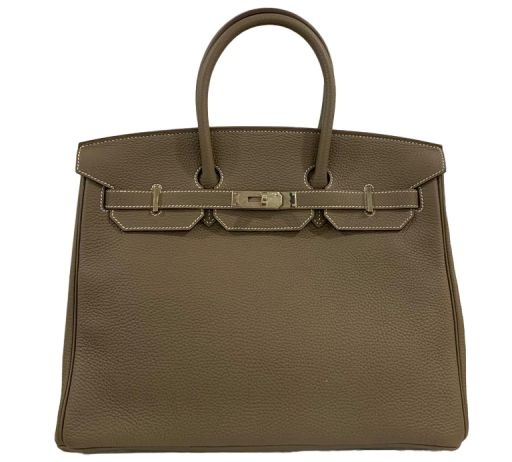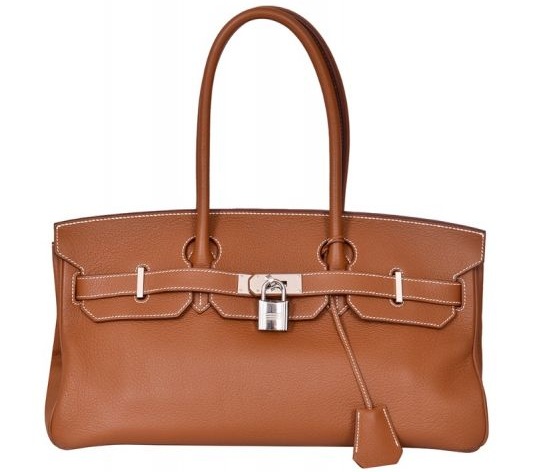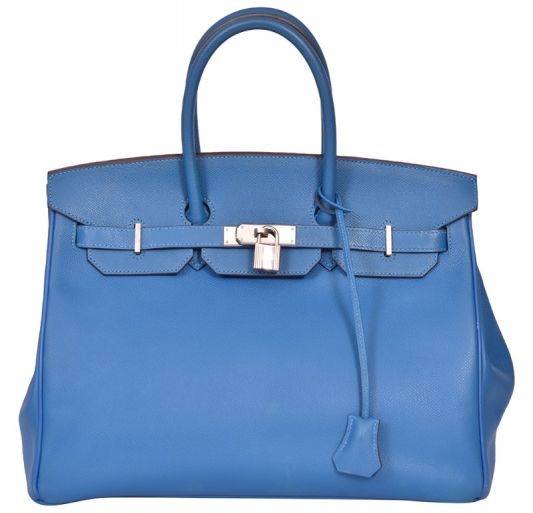DIWALI SALE NOW LIVE : 15th Oct - 25th Oct (USE COUPON CODE DIWALI5 TO AVAIL 5% OFF SITEWIDE)

The Hermès Birkin is a luxury accessory and at the same time a powerful reminder of the human skill and patience ability in an era that is mostly automating. Taking its name from the beautiful British actress Jane Birkin, who was the one to inspire the bag's creation during a flight in 1984, the Hermès bag is the most wanted item in the high fashion world. The fact that it is so rare, expensive, and designed to never go out of style can be traced back to one major truth: a Hermès Birkin bag is completely made by hand which means labor of an artisan ranging from 15 to 20 hours.
Hermès not only refers to their heritage leather and artisanal process as a method of manufacture but also as a way to keep a centuries-old French tradition alive. The use of the finest materials for the production of the famous French fashion house's bags and other leather accessories was started by none other than Thierry Hermès himself, the company's founder, in 1837 when he began to produce the best quality harnesses and saddles for the French royalty. This main principle of the company was the idea that quality items should not only be made to last for a lifetime but also for generations to come, and it still reigns over the sewing process today, ruling every stitch.
The Artisan: A Single Master, A Singular Vision

What makes the Birkin unique is the assolute faith in the sellier (saddler or leather craftsman) that is the main feature. In the Hermès workshops that are located in various parts of France, there are no modern production lines. A single craftsman gets the whole Birkin from the moment the leather is chosen until the last padlock is put on.
This solitary possession is vital for the ensuring of uniformity and the highest standard of quality. The craftsman does not just sew but also cuts the leather, assembles the bag, adds tools, and does the finishing. He leaves his autograph, which is a specific set of marks or a code, on the bag he produces, thereby making him accountable for the quality of the piece throughout its entire life.
If a Birkin requires repair after a long time, it is generally returned back to the original artisan or one who has been trained in the same manner, thus keeping the tradition alive and allowing for the craft's continuity. This is luxury in its most human-centered form, where a work of art is determined by the hands that worked on it, not by the machine that simply stamped it.
The Hermès Birkin saga begins with the most precise selection of materials.

Hermès draws on with no other but the premium grade, full-grain leather exclusively which means the natural characteristics of the animal including veins, pores, and wrinkles will be apparent and also the leather will gain a rich patina with time. The craftsmen devote their time to the examination of every single hide whether it is the widely used grained calfskin like Togo or Clemence, the fine-grained Epsom, or the rarest of the rare, the exotic skins like crocodile, alligator, or ostrich. This examination is very meticulous that each and every imperfection, be it a little mosquito bite or a very slight irregularity in the scale pattern, is marked and cut out.
Only those parts with no flaws are considered worthy of being in a Birkin. Depending on size and leather type, several skins may be needed to achieve the perfect color match and continuity across the panels of the bag, with the exotic ones often requiring four or five separate hides for one piece. The leather will then be cut with the help of ultra-precise templates, frequently hand tools will guide to ensure that every piece fits together without exception.
The Iconic Saddle Stitch: A Heritage of Strength

The center of the Birkin’s making is a method directly taken from Hermès’ equestrian past: the saddle stitch. With the saddle stitch, which is twofold, working with needles simultaneously inserting through the same hole and the threads intertwining within the leather, there is no unraveling. The break in one thread may cause the entire machine stitch to unravel as the two threads run parallel and that is one of the main characteristics of the machine stitch.
The process of stitching is quite tedious and time-consuming, taking as long as 18 hours; thereby, the cost of the bag is primarily due to the quality of craftsmanship and the meticulous work involved. To the end, it is the slightly irregular, unevenly tensioned, but still very strong saddle stitch by hand that identifies a real Hermès bag among all other imitations, and moreover, it happens to be much stronger than any alternative stitched by a machine.
The Finishing Touches: Polishing and Patina
The artisan is not really finished with the product after the stitching is done. He starts working on the wheel rims. The seams are padded with a hammer to make them thinner and then the edges are trimmed, sanded, and waxed with care to achieve a flawless finish that is never recognizable as the result of human intervention.
The hardware that incorporates and symbolizes the turn lock, the clochette (key bell), and the protective metal feet (clou)—is also managed with amazing precision. Brass is the material chosen for the parts that are then hand-polished to a mirror-like finish and subsequently coated with valuable metals such as 18-karat gold or palladium. The handles of the bag are also an arduous task; the artisan has to roll and layer numerous leather strips over many hours to attain their ideal ergonomic shape and toughness.
The Hermès Birkin bag is not just a product, but it also ranks as a mobile heritage. The firm and the museum ensure that the knowledge of saddle stitching and leatherwork is passed down through the generations since they not only train new artisans at the École Hermès des Savoir-Faire but also the best of young artisans. The outcome is a costly and functional object that is not designed for passing fashion, but rather for the longevity of art and the appreciation thereof.
